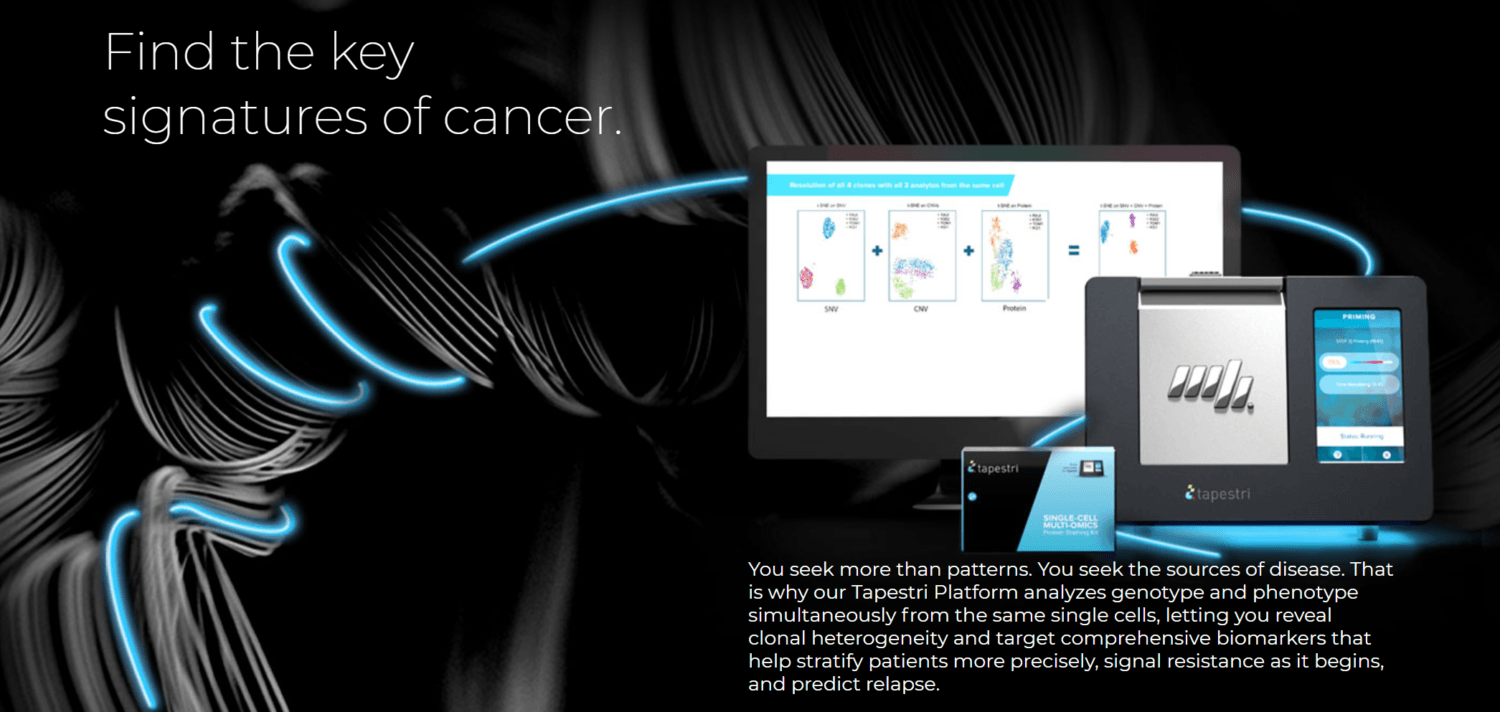
What You Should Know:
– Mission Bio launches industry’s first and only
single-cell multi-omics platform, is announcing the launch of its most
comprehensive instrument to-date, to save the industry billions of dollars in
drug development costs and bring life-saving treatments to market at least six months
faster.
– Mission Bio’s Tapestri Platform, the first single-cell platform capable of detecting DNA and protein changes simultaneously, gives a profound insight into the mutations that drive disease to enable faster, more successful development of precision cancer therapies.
– Spun out of the lab at UCSF and since led by a former
Berkeley engineer, the company has caught the attention of strategic investors
like Mayfield and Agilent, who see it as one to rival 10x Genomics.
Mission Bio, Inc., a South San Francisco, CA-based
company announced the launch of a complete Tapestri® Single-cell Multi-omics
Solution, the most comprehensive single-cell multi-omics platform on the
market. With a new instrument, single-cell
multi-omics reagent kits, TotalSeq-D™ antibody content from BioLegend, and
visualization software, the complete package provides layered insight into
multiple analytes across all blood cancers, reducing drug development time and cost by at least half.
The company is partnering with BioLegend, a global leader and provider of
world-class, cutting-edge antibodies and reagents, to develop antibody panels
for single-cell protein detection with the new device.
Why
Single Cell for DNA and Protein?
The
complexity of cancer cannot be overcome without
comprehensive tools. Running a large-scale clinical study costs around $40
million, and the pharmaceutical industry is losing $50 billion a year on failed
clinical trials and ineffective drugs. It is essential to identify precision
biomarkers and characterize resistance mechanisms — both DNA mutations and
protein expression– to minimize losses, maximize treatment efficacy, and
accelerate time to market.
“With
our technology, you can unlock the ground truth of cancer:
our DNA-Protein kit offers, for the first time, the
ability to understand the communication pathway all the way from the blueprint
of life in the center of the cell — DNA — to the exterior of the cell via
surface proteins, without inference or conjecture,” explained Nigel Beard,
Ph.D., Chief Technology Officer and SVP of Operations of Mission Bio. “It’s a product builders’ dream to deliver a disruptive
technology that truly empowers our customers with the potential to unravel the
many connected threads that make up the complexity of cancer.”
Uniquely Detect DNA & Protein Simultaneously from the Same Cell
Mission Bio’s new solution
can uniquely detect DNA and protein simultaneously from the same cell and is
already adopted by marquee NCI Cancer Centers,
including MD Anderson Cancer Center, Memorial
Sloan Kettering Cancer Center, University of
Texas, Southwestern Medical Center, and the University of California, San
Francisco. The offering sets a new standard for
comprehensive single-cell multi-omics, providing:
2x Faster Analysis – The new Tapestri
Instrument uniquely enables a simpler workflow for faster time-to-data.
By integrating both genotype and phenotype data on a single Tapestri run,
researchers save weeks in processing and analysis time in
running a single multi-omics workflow.
Get More Out of Your Sample – Save precious
samples by utilizing new reagent kits for a single
workflow to obtain both mutation data and protein expression.
– New Tapestri Cell Protein Staining Reagent Kits from Mission Bio are optimized with a fully developed protocol and compatible with new TotalSeq-D kits from BioLegend and existing Tapestri Core Reagent Kits.
– The 45-plex TotalSeq-D Heme Oncology Cocktail is the first catalog panel in partnership with BioLegend for single-cell surface protein detection with the Tapestri Platform. The panel is pre-mixed, titrated, and lyophilized and consists of antibodies applicable to various hematological malignancies.
Visualization Tools for
Integrated Insights – From novice users to savvier bioinformaticians, the
updated Tapestri Pipeline and Insights software provide publication-ready
visualization tools that make it easier to understand data — from raw
sequencing files to multi-dimensional cluster plots.
“The value of connecting the mutations in single-cells with their immunophenotypes directly has been a game-changer in allowing us to discover cell surface markers that identify disease stem cells. Merging multiple assays saves us a tremendous amount of time and allows for better insights into disease biology so that we can develop more precise and effective therapies,” said Stephen Chung, M.D., University of Texas, Southwestern Medical Center.